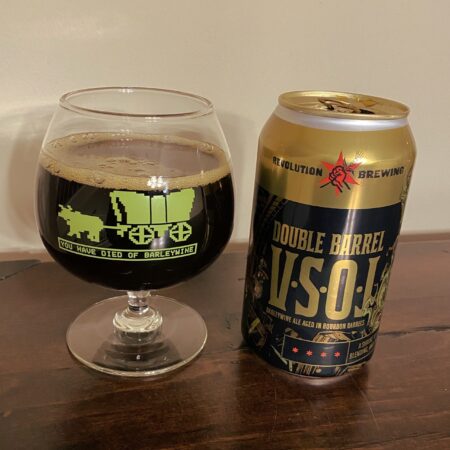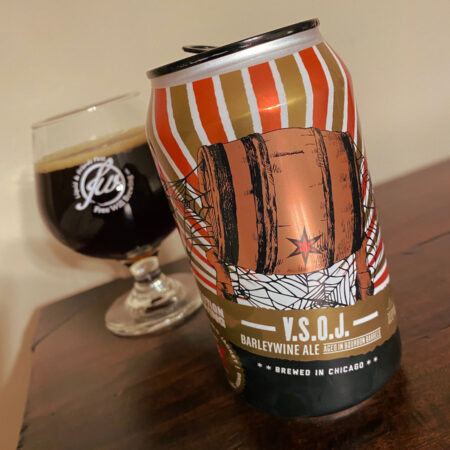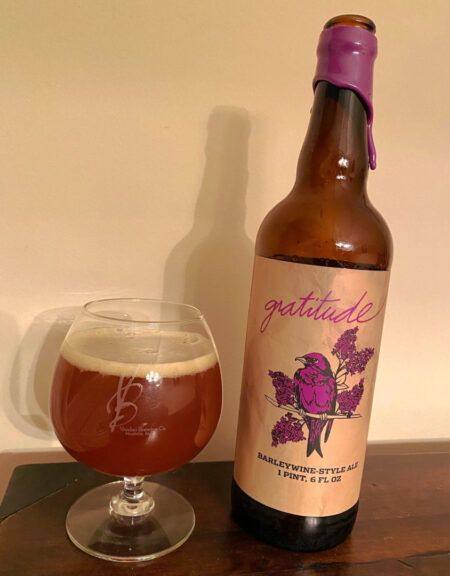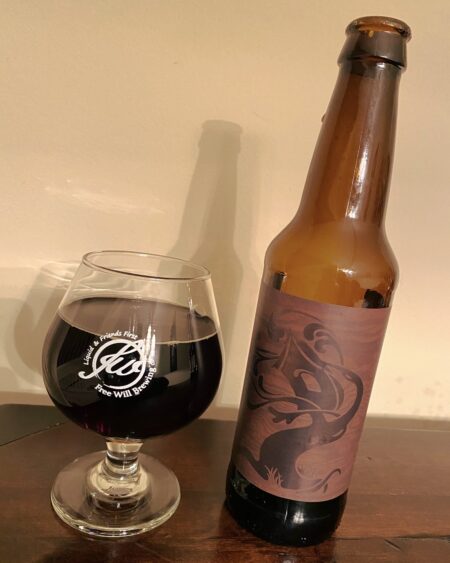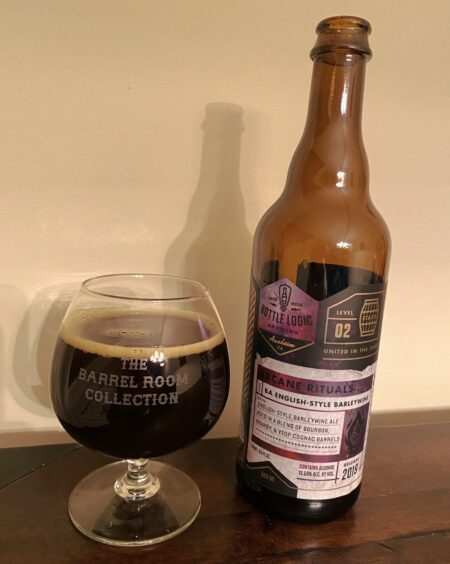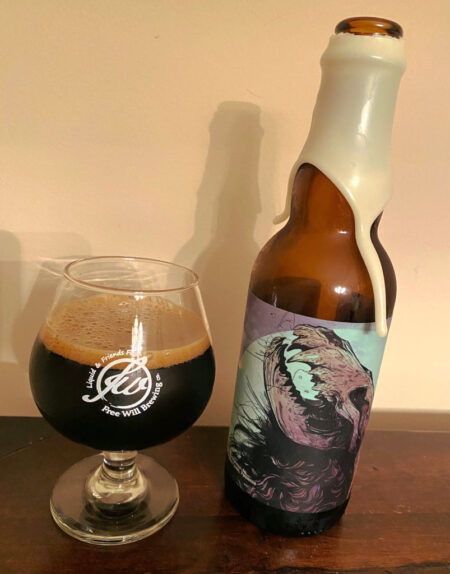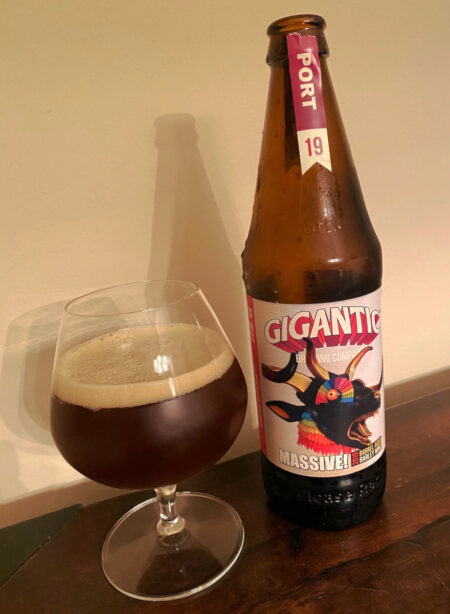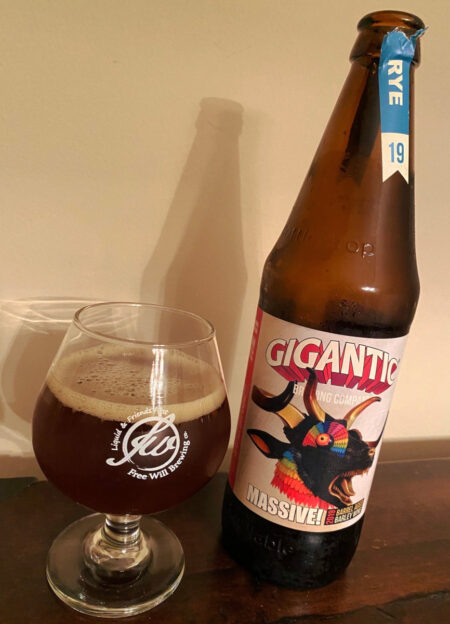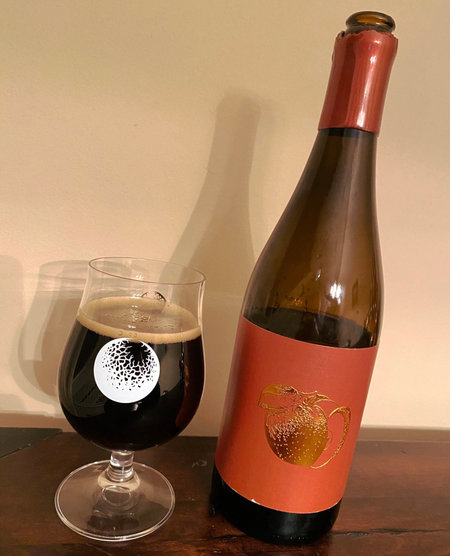Free Will made a name for itself (at least, among the all important market segment of “me”) with its Ralphius series of barrel-aged imperial stouts, a project that has been getting more and more ambitious over time. Released on Black Friday, it’s a clear local answer to the now ubiquitous BCBS (this prompts plenty of teeth gnashing from the local beer dorkery about which is better, a digression I will avoid right now because it’s… a pretty boring subject.)
A couple years ago, they also set their sights on another craft beer oddity and released Dystopias, the clear local answer to Sam Adams’ infamous Utopias. Details are a bit sparse, noting only that it’s a “new blend of stock aged for multiple years, in many types of barrels, utilizing a unique fermentation technique along the way, with multiple yeast strains and sugar additions.”
If you’ll permit some wild and unsubstantiated speculation on my part, I’m guessing that there’s some shared DNA with Ralphius (especially given the depth and breadth of their Ralphius barrel stocks in recent years) and Ella, though I wouldn’t be surprised if the yeast, fermentation technique, and sugar additions transformed the result into something less recognizable as such. Or I could be totally off base – the beer does resemble something more like an oxidized barleywine a la Utopias or Xyauyù than a stout or quad. Whatever the case, it’s a delightful mad scientist experiment that turned out great, and I’m happy that this sort of thing is happening locally…
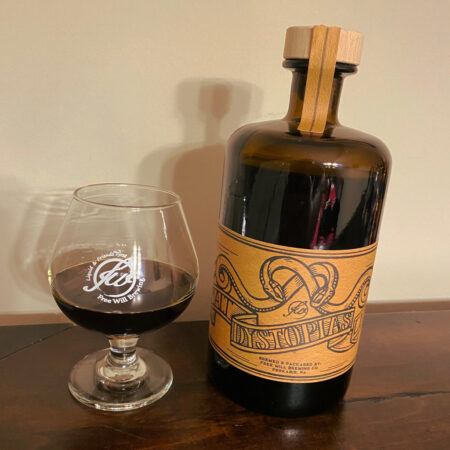
Free Will Dystopias – Pours a deep, dark brown color with maybe a hint of amber, no head or carbonation whatsoever, but it leaves legs as I drink, the same way a liquor would. Smells great, sweet, dark fruit, raisins, dried figs, caramel, toffee, tons of brown sugar, molasses, oak, earthy leather, tobacco, it just keeps going. Taste hits the caramel and toffee a bit harder than the nose would have you believe, but the brown sugar, molasses, and dark fruit (raisins and figs) are all there and making themselves known, plenty of oak and vanilla too, and those amazing leather and tobacco notes, along with a heaping helping of booze. Mouthfeel is rich and full bodied, completely still (no carbonation whatsoever), and while it has alcohol heat, it’s nowhere near as hot as you might expect from a 20.1% ABV monster. Overall, this is amazingly complex stuff and while it might be a bit awkward to say this is balanced, the various elements are in some sort of equilibrium here. It’s fantastic, and compares favorably to stuff like Utopias and Xyauyù and while I don’t usually factor cost into these reviews, this is considerably cheaper than either of those (even if it’s still pretty damn expensive). A
Beer Nerd Details: 20.1% ABV bottled (750 ml whisky style cork). Drank out of a snifter on 5/22/23. Batch 2.
And a surprise bonus review for an unexpected Ralphius variant in last year’s drop:
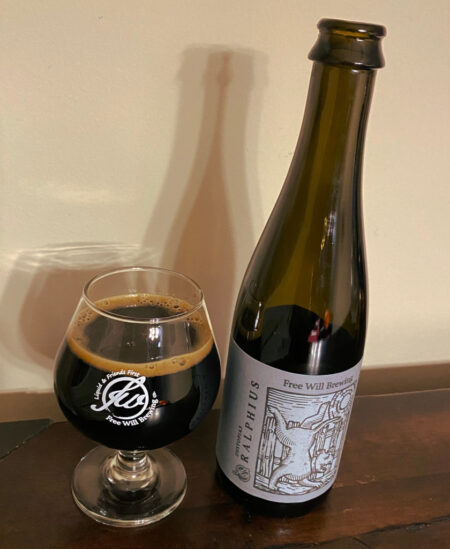
Free Will Dystopias Ralphius – One of the 14 Ralphius variants released in 2023, this was Ralphius aged for one year in Dystopias barrels (presumably the Dystopias batch one barrels). Pours the standard extra dark black color with a ring of short lived tan head around the edges of the glass (and yet, a light lacing somehow). Smells great, lots of brown sugar, oak, and caramel on top of the stout base. Taste hits rich caramel mingled with brown sugar, molasses, and a heaping helping of booze. Mouthfeel is very lightly carbed (still appropriate for what it is), full bodied, rich, and chewy, with a pleasant boozy heat. Overall, it’s quite distinct from the bourbon barrel variants of Ralphius, while still providing great complementary flavors. My only real comparison point (beyond other Ralphius variants), is Dogfish Head’s Utopias Barrel Aged World Wide Stout, which is nice, but not as distinctive or good as this… A-
Beer Nerd Details: 15.1% bottled (375 ml capped). Drank out of a snifter glass on 11/28/23. A total of ~200 bottles were produced.
While this has turned some heads amongst the Barleywine is Life crowd, the high price tag (while not nearly as high as Utopias) has perhaps let this slip under the radar a bit. Batch 3 was released a few months ago without much fanfare, but I’d say it’s just as nice. I’ve got a bottle in the cellar too, as I suspect this will age spectacularly.
Anywho, as you can tell by the “drank on” dates, this post has been lingering in the drafts folder for quite a while and indeed, there’s quite the backlog of posts in there. I’ve been woefully neglectful of the blog of late, and it’s not like anyone reads this stuff anyway, but I’ll probably bang out a few more in the nearish future.
